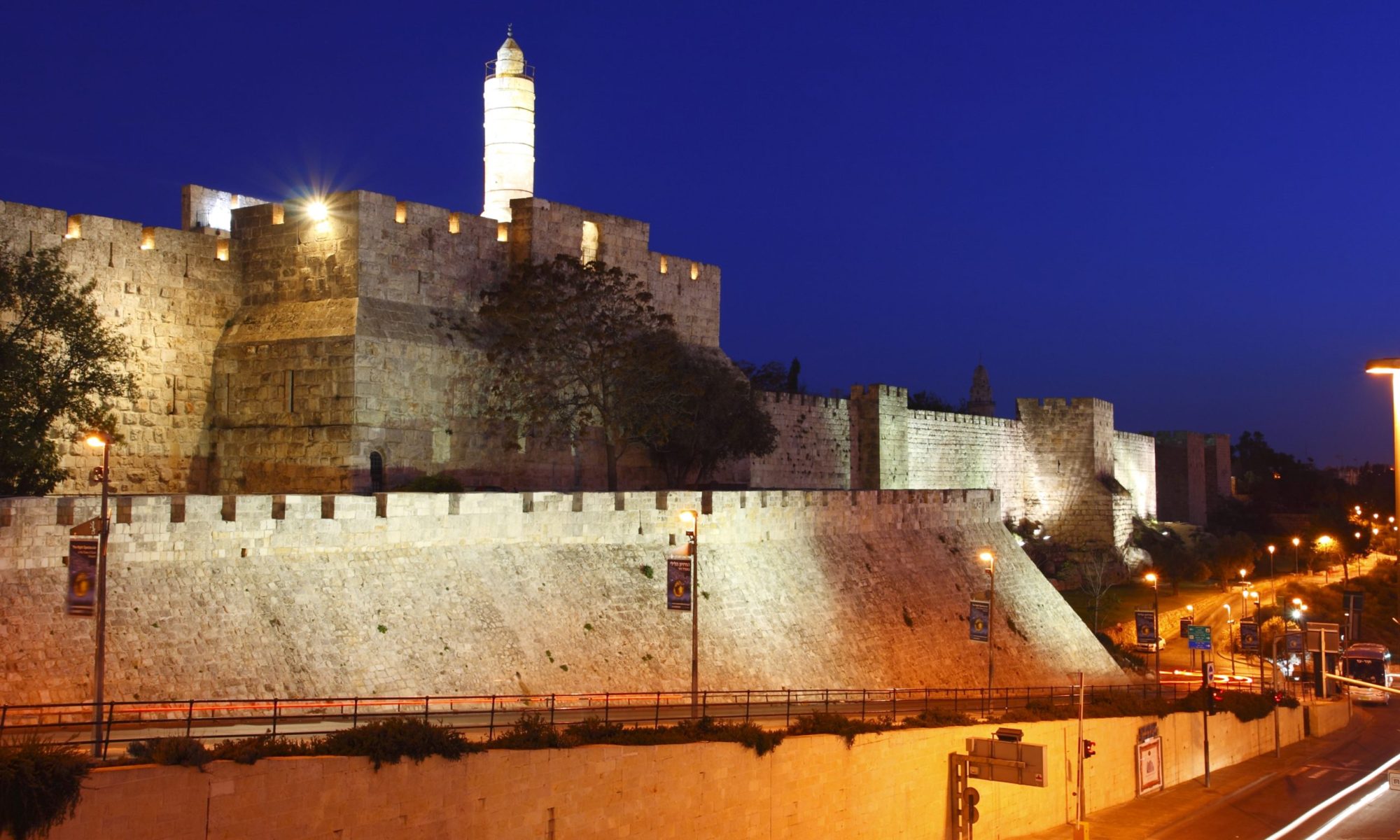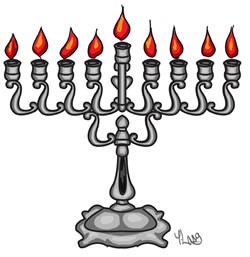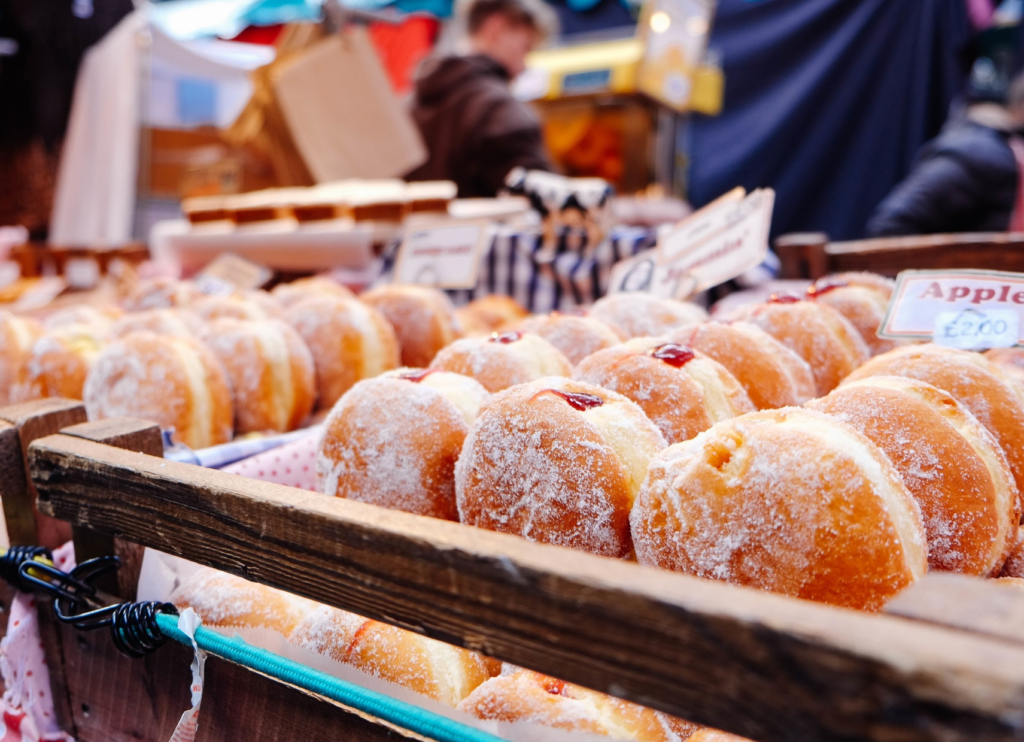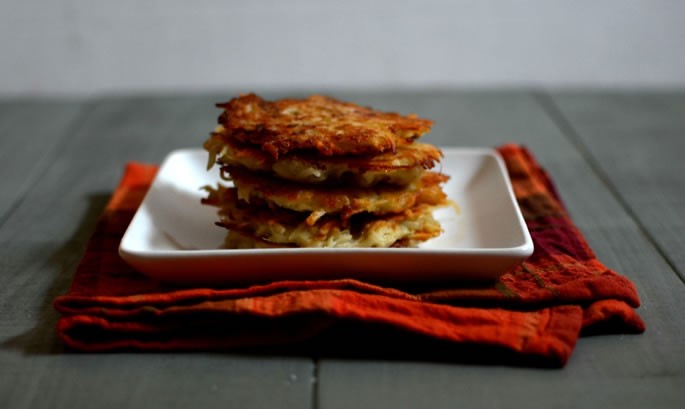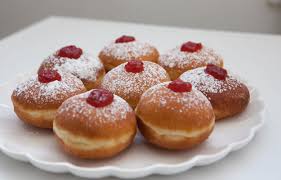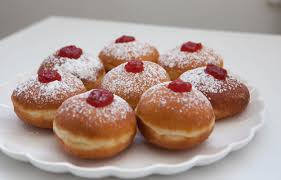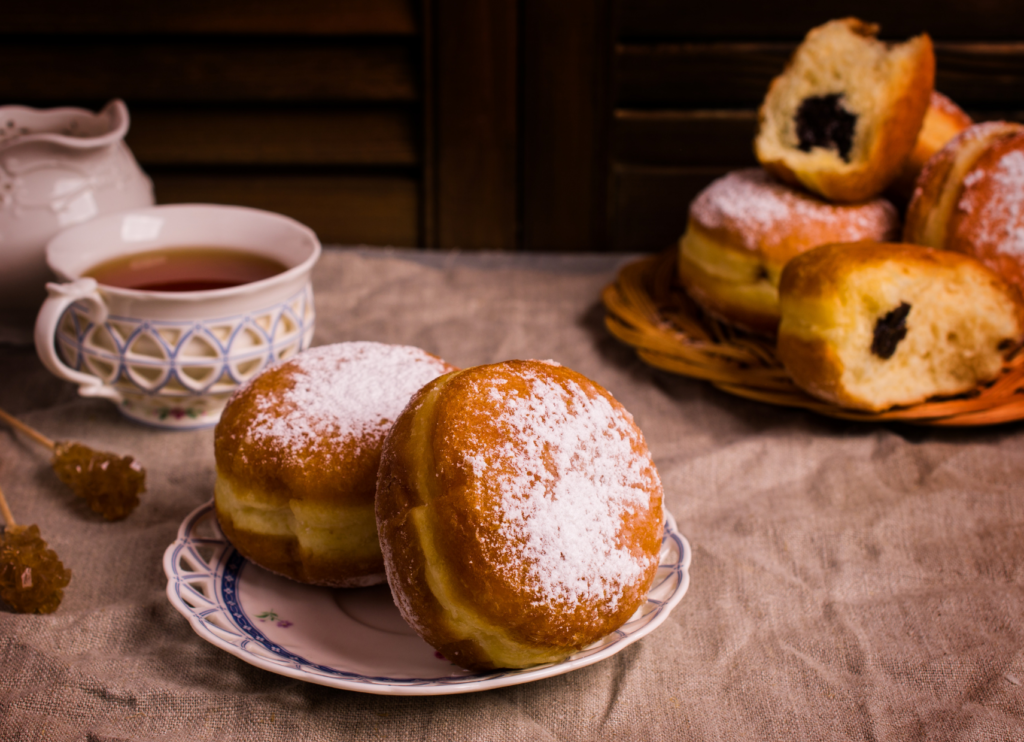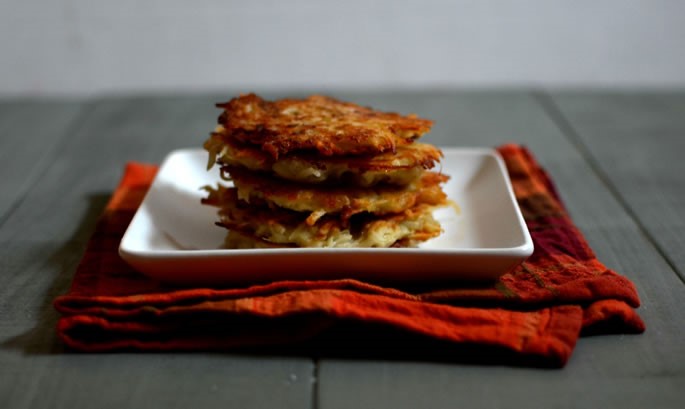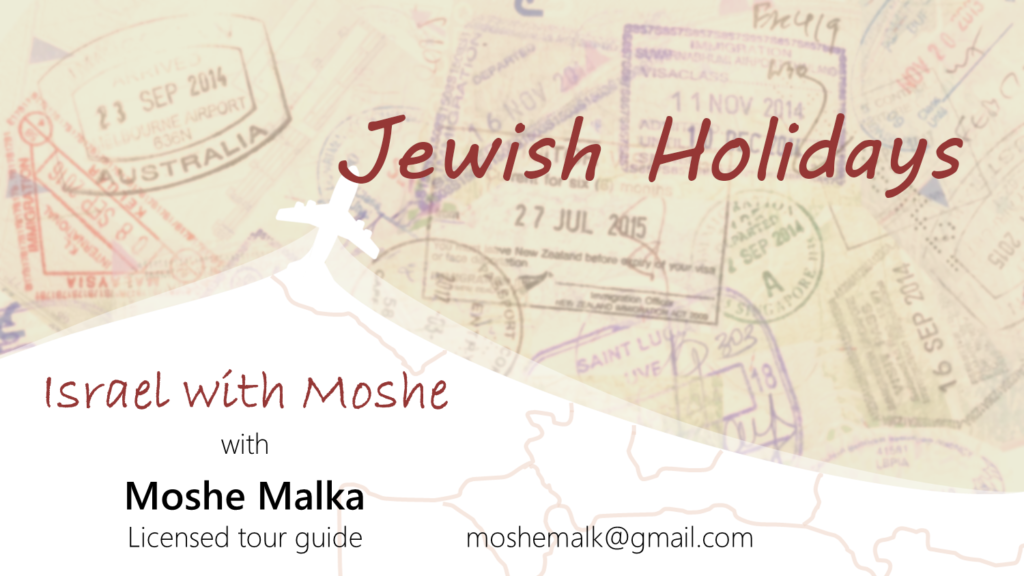
CHANUKAH
THE FESTIVAL OF LIGHTS
Below is a short description of this holiday (also called the Festival of Lights) and its meaning, together with some of the special traditions and foods related to this holiday.
Go to our website www.israelwithmoshe.com and visit the “Jewish Holidays” video series
What Is Hanukkah?
Info you need about Chanukah
Chanukah is the Jewish eight-day, wintertime “festival of lights,” celebrated with a nightly menorah lighting, special prayers and fried foods.
The Hebrew word Chanukah means “dedication,” and is thus named because it celebrates the rededication of the Holy Temple (as you’ll read below).
What Chanukah Commemorates
In the second century BC, the Holy Land was ruled by the Seleucids (Syrian-Greeks), who tried to force the people of Israel to accept Greek culture and beliefs instead of mitzvah observance and belief in God. Against all odds, a small band of faithful but poorly armed Jews, led by Judah the Maccabee, defeated one of the mightiest armies on earth, drove the Greeks from the land, reclaimed the Holy Temple in Jerusalem and rededicated it to the service of God.
When they sought to light the Temple’s Menorah (the seven-branched candelabrum), they found only a single cruse of olive oil that had escaped contamination by the Greeks. Miraculously, they lit the menorah and the one-day supply of oil lasted for eight days, until new oil could be prepared under conditions of ritual purity.
To commemorate and publicize these miracles, the sages instituted the festival of Chanukah.
When is Chanukah?
Chanukah begins on the eve of Kislev 25 and continues for eight days. On the civil calendar, it generally coincides with the month of December. Chanukah 2020 runs from Dec. 10-18.
The Story of Chanukah
More than 2000 years ago there was a time when the land of Israel was part of the Syrian-Greek Empire, dominated by Syrian rulers of the dynasty of the Seleucids.
In order to relate the story that led up to Chanukah, we shall start with Antiochus III, the King of Syria, who reigned from 222-186 B.C. He had waged war with King Ptolemy of Egypt over the possession of the Land of Israel. Antiochus III was victorious and the Land of Israel was annexed to his empire. At the beginning of his reign, he was favorably disposed toward the Jews and accorded them some privileges. Later on, however, when he was beaten by the Romans and compelled to pay heavy taxes, the burden fell upon the various peoples of his empire who were forced to furnish the heavy gold that was required of him by the Romans. When Antiochus died, his son Seleucus IV took over, and further oppressed the Jews.
Added to the troubles from the outside were the grave perils that threatened Judaism from within. The influence of the Hellenists (people who accepted idol-worship and the Syrian way of life) was increasing. Yochanan, the High Priest, foresaw the danger to Judaism from the penetration of Syrian-Greek influence into the Holy Land. For, in contrast to the ideal of outward beauty held by the Greeks and Syrians, Judaism emphasizes truth and moral purity, as commanded by God in the holy Torah. The Jewish people could never give up their faith in God and accept the idol-worship of the Syrians.
Yochanan was therefore opposed to any attempt on the part of the Jewish Hellenists to introduce Greek and Syrian customs into the land. The Hellenists hated him. One of them told the King’s commissioner that in the treasury of the Temple there was a great deal of wealth.
The wealth in the treasury consisted of the contributions of “half a shekel” made by all adult Jews annually. That was given for the purpose of the sacrifices on the altar, as well as for fixing and improving the Temple building. Another part of the treasury consisted of orphans’ funds which were deposited for them until they became of age. Seleucus needed money in order to pay the Romans. He sent his minister Helyodros to take the money from the treasury of the Temple. In vain did Yochanan, the High Priest, beg him not to do it. Helyodros did not listen and entered the gate of the Temple. But suddenly, he became pale with fright. The next moment he fainted and fell to the ground. After Helyodros came to, he did not dare enter again.
The Madman: Antiochus
A short time later, Seleucus was killed and his brother Antiochus IV began to reign over Syria (174 B.C). He was a tyrant of a rash and impetuous nature, contemptuous of religion and of the feelings of others. He was called “Epiphanes,” meaning “the gods’ beloved.” Several of the Syrian rulers received similar titles. But a historian of his time, Polebius, gave him the epithet Epimanes (“madman”), a title more suitable to the character of this harsh and cruel king.
Desiring to unify his kingdom through the medium of a common religion and culture, Antiochus tried to root out the individualism of the Jews by suppressing all the Jewish Laws. He removed the righteous High Priest, Yochanan, from the Temple in Jerusalem, and in his place installed Yochanan’s brother Joshua, who loved to call himself by the Greek name of Jason. For he was a member of the Hellenist party, and he used his high office to spread more and more of the Greek customs among the priesthood.
Joshua or Jason was later replaced by another man, Menelaus, who had promised the king that he would bring in more money than Jason did. When Yochanan, the former High Priest, protested against the spread of the Hellenists’ influence in the Holy Temple, the ruling High Priest hired murderers to assassinate him.
Antiochus was at that time engaged in a successful war against Egypt. But messengers from Rome arrived and commanded him to stop the war, and he had to yield. Meanwhile, in Jerusalem, a rumor spread that a serious accident had befallen Antiochus. Thinking that he was dead, the people rebelled against Menelaus. The treacherous High Priest fled together with his friends.
Mattityahu
Antiochus’s men went from town to town and from village to village to force the inhabitants to worship pagan gods. Only one refuge area remained and that was the hills of Judea with their caves. But even there did the Syrians pursue the faithful Jews, and many a Jew died a martyr’s death.
One day the henchmen of Antiochus arrived in the village of Modiin where Mattityahu, the old priest, lived. The Syrian officer built an altar in the marketplace of the village and demanded that Mattityahu offer sacrifices to the Greek gods. Mattityahu replied, “I, my sons and my brothers are determined to remain loyal to the covenant which our God made with our ancestors!”
Thereupon, a Hellenistic Jew approached the altar to offer a sacrifice. Mattityahu grabbed his sword and killed him, and his sons and friends fell upon the Syrian officers and men. They killed many of them and chased the rest away. They then destroyed the altar.
Mattityahu knew that Antiochus would be enraged when he heard what had happened. He would certainly send an expedition to punish him and his followers. Mattityahu, therefore, left the village of Modiin and fled together with his sons and friends to the hills of Judea.
All loyal and courageous Jews joined them. They formed legions and from time to time they left their hiding places to fall upon enemy detachments and outposts, and to destroy the pagan altars that were built by order of Antiochus.
The Maccabees
Before his death, Mattityahu called his sons together and urged them to continue to fight in defense of God’s Torah. He asked them to follow the counsel of their brother Shimon the Wise. In waging warfare, he said, their leader should be Judah the Strong. Judah was called “Maccabee,” a word composed of the initial letters of the four Hebrew words Mi Kamocha Ba’eilim Hashem, “Who is like You, O’ God.”
Antiochus sent his General Apolonius to wipe out Judah and his followers, the Maccabees. Though greater in number and equipment than their adversaries, the Syrians were defeated by the Maccabees. Antiochus sent out another expedition which also was defeated. He realized that only by sending a powerful army could he hope to defeat Judah and his brave fighting men.
An army consisting of more than 40,000 men swept the land under the leadership of two commanders, Nicanor and Gorgiash. When Judah and his brothers heard of that, they exclaimed: “Let us fight unto death in defense of our souls and our Temple!” The people assembled in Mitzpah, where Samuel, the prophet of old, had offered prayers to God. After a series of battles the war was won.
The Dedication (Chanukah is Hebrew)
Now the Maccabees returned to Jerusalem to liberate it. They entered the Temple and cleared it of the idols placed there by the Syrian vandals. Judah and his followers built a new altar, which he dedicated on the twenty-fifth of the month of Kislev, in the year 139 B.C.
Since the golden Menorah had been stolen by the Syrians, the Maccabees now made one of cheaper metal. When they wanted to light it, they found only a small cruse of pure olive oil bearing the seal of the High Priest Yochanan. It was sufficient to light only for one day. By a miracle of God, it continued to burn for eight days, till new oil was made available. That miracle proved that God had again taken His people under His protection. In memory of this, our sages appointed these eight days for annual thanksgiving and for lighting candles.
How Chanukah Is Observed
At the heart of the festival is the nightly menorah lighting. The menorah holds nine flames, one of which is the shamash (“attendant”), which is used to kindle the other eight lights. On the first night, we light just one flame. On the second night, an additional flame is lit. By the eighth night of Chanukah, all eight lights are kindled.
Special blessings are recited, often to a traditional melody, before the menorah is lit, and traditional songs are sung afterward.
A menorah is lit in every household (or even by each individual within the household) and placed in a doorway or window. The menorah is also lit in synagogues and other public places.
The Menorah
The basic elements of a kosher menorah are eight holders for oil or candles and an additional holder, set apart from the rest, for the shamash (“attendant”) candle.
The Chanukah lights can either be candle flames or oil-fueled. Since the miracle of Chanukah happened with olive oil – the little cruse of oil that lasted for eight days – an oil menorah is preferable to a candle one, and olive oil is the ideal fuel. Cotton wicks are preferred because of the smooth flame they produce.
The eight candles of the menorah must be arranged in a straight, even line, not in a zigzag or with some lights higher than others. If it is an oil menorah, the oil cups must hold enough oil to burn for the required time – at least 30 minutes on weeknights, and up to one-and-a-half hours on Friday evening. If it is a candle menorah, the candles should be large enough to burn for the required time.
Who Lights the Menorah
Men and women alike are obligated to participate in the menorah lighting. In some families, the head of the household lights the family menorah while everyone else listens to the blessings and answers, “Amen.” In many other families, all members of the household, including children, light their own menorahs. Either way, it is important for everyone to be present and involved when the Chanukah miracle is festively commemorated.
Where to Light
Light the menorah in your own home. If you are traveling out of town, set up your menorah wherever you will be staying for the night.
In the home, there are two preferred locations for the menorah.
You can set up the menorah in a central doorway. Place it on a chair or small table near the doorpost that is opposite the mezuzah. Ideally, the menorah lights should be between 12 and 40 inches off the ground.
Or you can set up your menorah on a windowsill facing the street. This option should only be exercised if the window is less than thirty feet above ground-level.
When to Light
The Chanukah lights are kindled every night of Chanukah. The Maccabees chased away the forces of darkness with swords; we do it with light.
The custom of many communities is to light the menorah shortly after sunset. In other communities, the menorah is kindled after nightfall (approximately thirty minutes after sunset). Regardless of the custom you follow on other Chanukah nights, on Friday night the menorah is lit before sunset, and on Saturday night it is lit after nightfall.
Ideally, you should light the menorah at the earliest possible opportunity. Only delay if you are awaiting the arrival of family members who wish to be present when the menorah is lit.
Lighting the Menorah
1. Arrange the lights on the menorah. Ensure that there is enough oil, or that the candles are big enough, for the lights to burn until half an hour after nightfall (or, if lighting after nightfall, for one half hour). On the first night, set one candle to the far right of the menorah. On the following night, add a second light to the left of the first one, and then add one light each night of Chanukah – moving from right to left.
2. Gather everyone in the house around the menorah.
3. Light the shamash candle. Then hold it in your right hand (unless you are left-handed).
4. While standing, recite the appropriate blessings.
5. Light the candles. Each night, light the newest (left-most) candle first and continue lighting from left to right. (We add lights to the menorah from right to left, while we light from left to right.)
The Menorah Blessings
Before lighting the Chanukah candles, we thank God for giving us this special mitzvah, and for the incredible Chanukah miracles:
בָּרוּךְ אַתָּה אֲדֹנָי אֱלֹהֵינוּ מֶלֶךְ הָעוֹלָם אֲשֶׁר קִדְּשָׁנוּ בְּמִצְוֹתָיו וְצִוָּנוּ לְהַדְלִיק נֵר חֲנֻכָּה
בָּרוּךְ אַתָּה אֲדֹנָי אֱלֹהֵינוּ מֶלֶךְ הָעוֹלָם שֶׁעָשָׂה נִסִּים לַאֲבוֹתֵינוּ בַּיָּמִים הָהֵם בִּזְּמַן הַזֶּה
Bah-rookh ah-tah ah-doh-noi eh-loh-hay-noo meh-lekh hah-oh-lahm ah-sher ki-deh-shah-noo beh-mitz-voh-tahv veh-tzee-vah-noo leh-hahd-lik nayr kha-noo-kah.
Bah-rookh ah-tah ah-doh-noi eh-loh-hay-noo meh-lekh hah-oh-lahm sheh-ah-sah nee-sim lah-ah-voh-tay-noo bah-yah-mim hah-haym biz-mahn hah-zeh.
Blessed are You, Lord our G‑d, King of the universe, who has sanctified us with His commandments, and commanded us to kindle the Chanukah light.
Blessed are You, Lord our G‑d, King of the universe, who performed miracles for our forefathers in those days, at this time.
On the first night of Chanukah, Thursday, Dec. 10, 2020 (or the first time on Chanukah you perform this mitzvah), add the following blessing:
בָּרוּךְ אַתָּה אֲדֹנָי אֱלֹהֵינוּ מֶלֶךְ הָעוֹלָם שֶׁהֶחֱיָנוּ וְקִיְּמָנוּ וְהִגִּיעָנוּ לִזְּמַן הַזֶּה
Bah-rookh ah-tah ah-doh-noi eh-loh-hay-noo meh-lekh hah-oh-lahm sheh-heh-kheh-yah-noo veh-kee-mah-noo ve-hig-ee-yah-noo liz-mahn hah-zeh.
Blessed are You, Lord our G‑d, King of the universe, who has granted us life, sustained us, and enabled us to reach this occasion.
Dreidel: the Chanukah Game
On Chanukah, it is customary to play with a “dreidel” (a four-sided spinning top bearing the Hebrew letters, nun, gimmel, hei and shin, an acronym for nes gadol hayah sham, “a great miracle happened there”). The game is usually played for a pot of coins, nuts, or other stuff, which is won or lost based on which letter the dreidel lands when it is spun.
In Israel, the actual setting of the Chanukah miracle, the last letter, shin, is substituted with a pey (פ), which stands for “po“—”here.”
Getting Your Dreidel Game Started
In addition to dreidels, you’ll need the the currency—nuts, pennies, nickels, chocolate coins, or just about anything else…
All players sit around the playing area.
The currency is equally divided amongst all players.
Everyone takes a turn at spinning the dreidel; the one with the highest spin has first turn. (Nun is highest, then gimmel, hey, and shin.) If there is a tie for highest, those who tied spin again.
Everyone puts one unit of the currency (penny, nut, etc.) into the pot.
The one who has first turn is followed in clockwise direction by all the others.
How to Play Dreidel
If the dreidel lands on a…

Nun Absolutely nothing happens. Nun stands for the Yiddish word nul, which means zero. It’s time for the player to your left to take a spin.

Gimel You get to take the whole pot! Gimmel stands for gantz, which means whole. Everyone, including you, now puts another unit into the pot, and the person to your left tries his luck at spinning.

Hey You get to take half of the pot. Hey stands for halb, half. If the pot has an odd amount of units, don’t try to split that penny, nut, or piece of chocolate in half. Leave the odd item there.

Shin You put a unit into the pot. Shin is for shenk; yes, that means “give.”
You can speed up the game by upping the ante, raising shin and post-gimmel contributions to two, three or even four units.
Any player that cannot contribute after landing on a shin or after a fellow player lands on a gimmel, is out of the game. The game ends when there is one player left.
The traditional Chanukah dreidel is a throwback to the times when the Greek armies of King Antiochus controlled the Holy Land, before the Maccabees defeated them. The powerful regime passed a series of laws outlawing the study of Torah and many of the mitzvot. The Jews were compelled to take their Torah learning “underground, pretending they are playing games.
Chanukah Food
Since the Chanukah miracle involved oil, it is customary to eat foods fried in oil. The Eastern-European classic is the potato latke (pancake) garnished with applesauce or sour cream, and the reigning Israeli favorite is the jelly-filled sufganya (doughnut).
Chanukah food traditions have their origins in the first years that the holiday was celebrated and are meant to remind us of certain miracles associated with the events of Chanukah itself. And, of course, remembering the miracles and the freedom that we’re all celebrating adds a special flavor to everything we serve.
Sufganiyot (Doughnuts)
There are many recipes for these Chanukah doughnuts, this recipe is the typical traditional “jelly doughnuts”, meaning they are filled with your choice of jelly, whatever you like, and represent this holiday very well. Sufganiyot (Hebrew for doughnuts) are synonymous with Chanukah.
Below, is a short video on how to bake these Sufganiyot and how to shape them
Potato Latkes
You’ll need onion, oil, salt, potatoes, eggs, flour and oil. While the recipe works with any type of potato, using Yukon Gold will be much more aesthetically pleasing because they discolor much more slowly than other potatoes and will keep your mixture looking bright and fresh for longer. They also have a buttery taste which will take your latkes to the next level.
